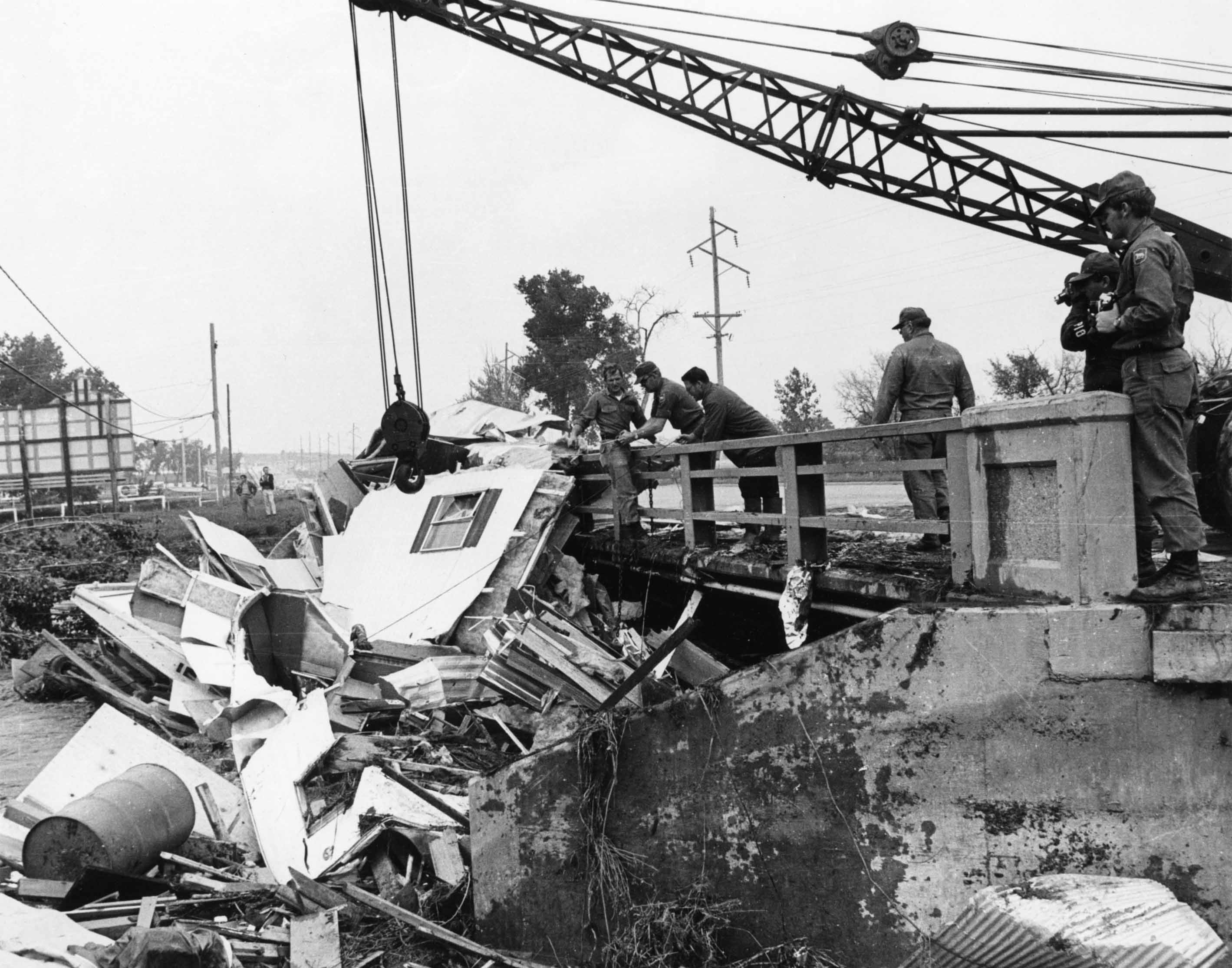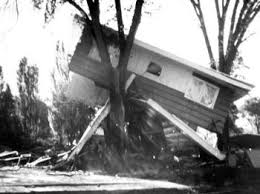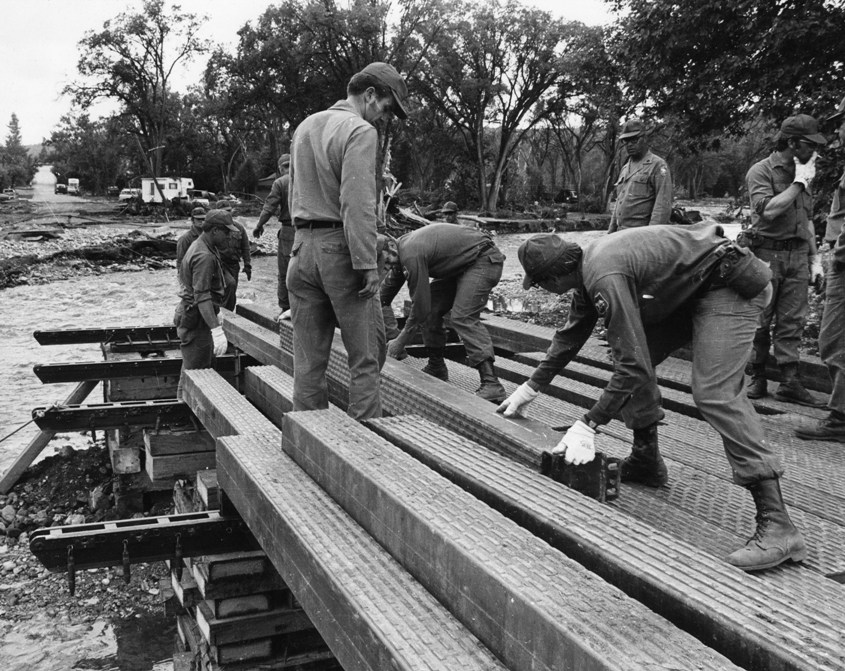On June 12, 1972 in SDNG history, it did not take long for the 200th Engineer Company and 211th Engineer Company to install temporary military bridges over flood ravaged Rapid Creek.
The 211th Engineer Company, stationed in Lemmon and Mobridge, was performing their Annual Training at Camp Grafton, ND when they were notified in the early hours of June 10th to load up and move to Camp Rapid.
The 200th Engineer Company stationed in Chamberlain, Platte and Winner was scheduled to attend their Annual Training in August. It was also in the early hours of June 10th that they were alerted to report to Camp Rapid as soon as possible. Sgt. 1st Class Francis Drew was the Maintenance NCO at the time and recalls that he received the call at 3 a.m. the morning of June 10th, Sgt. Glover was on the phone and said “Alert your platoon and report to the armory, Rapid City is flooding and we need get the boats and bridges out there right away”. Master Sgt. Mo Johnson from Detachment 1 at Platte remembered how well the alert plan worked. Sgt. Johnson said, “Within two hours of getting the alert, over 90 percent of the detachment had arrived at the armory and were busy getting the equipment ready to go. We arrived at Rapid City in the morning of June 10th”.
The two units were assigned the mission of installing three bridges to replace those washed out by the raging water on June 9th. The 211th Engineer Company placed a Bailey panel bridge over Evergreen Drive. The 200th Engineer Company installed one M4T6 dry span bridge at 38th Street.
The 200th also placed one M4T6 bridge at the Cleghorn Springs Fish Hatchery to replace the bridge washed out at Chapel Lane. The original bridge site at Chapel Lane was badly washed out creating a span that was too wide to install the bridge in the original location. National Guard engineers moved the bridge site about 400 yards to the west.
It was before noon on June 14th when cars and trucks were driving across the three bridges these two South Dakota National Guard units had installed across Rapid Creek. Sgt. Johnson remembered, “The bridges were left up most of the summer and a small crew remained in Camp Rapid to maintain the bridges.”
Sgt. Drew stated, “Those that were not actively engaged in the bridge erection detail were assigned to the searching for bodies along a stretch of Rapid Creek”.




